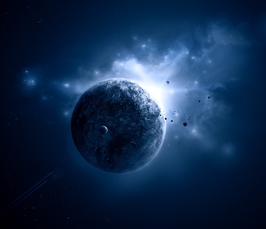Planetary Group Seminar: Mercury´s past rotation, as indicated by its large surface craters (J. Knibbe)
- Date: Jan 18, 2017
- Time: 11:00 AM - 12:00 PM (Local Time Germany)
- Speaker: Jurrien Knibbe
- VU University Amsterdam
- Location: MPS
- Room: Aquila + Bootes
- Host: Ulrich Christensen

One rotation of planet Mercury takes ~58 days, which is precisely two/thirds of its orbital period (~88 days). This unique 3:2 spin-orbit resonance in our solar system is stable for an object in an elliptic orbit as that of Mercury (Mercury's eccentricity is 0.206). To arrive in this rotational state from an initial rapid rotation, Mercury must have passed other rotational states which are also stable. We propose that Mercury previously attained a 2:1 spin-orbit resonance. This is supported by the hemispheric assymetry of Mercury's large surface craters, which is impossible to produce in a 3:2 spin-orbit resonance but can be produced in a 2:1 spin-orbit resonance. Mercury's largest and most recent large impact (the Caloris impact of ~3.8 billion years ago) would have destabilized the 2:1 spin-orbit resonance. Hereafter, the planet naturally de-spun to the 3:2 spin-orbit resonance under influence of tides.